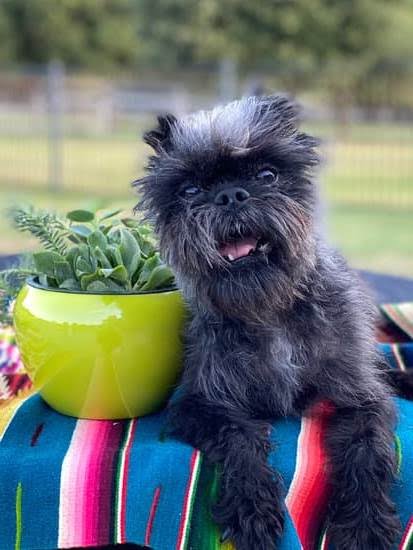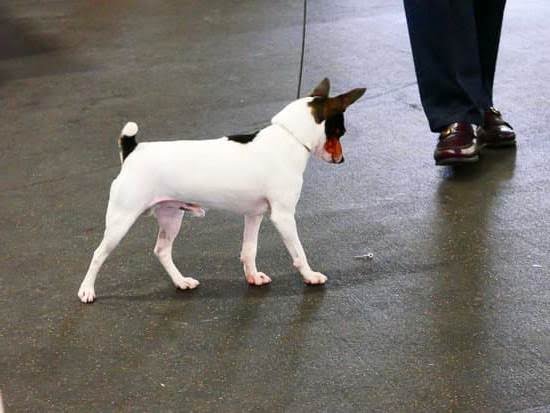Introduction
Clicker training is an effective and positive way to teach a dog tricks. It is a method of associative learning where the dog learns through pairing an audible sound with a treat or reward, and thereby develops an understanding that when they hear the click, they’re about to receive a reward. This type of training breaks down complex behaviors into smaller steps, making them easier for dogs to understand. Clicker training can be used to teach your pup how to give paw quickly and easily, making it a fun and inspiring experience for you both! Not only can you practice at home, but the skills learned in this process can be used for activities such as competitive obedience or agility exercises as well. Being able to give paw on cue can also come in handy when teaching house manners – getting your pup to put his paws on command can be an easy way for them to self-regulate energy levels in moments where too much enthusiasm is not appropriate (e.g., when greeting guests). Overall, clicker training provides a safe environment with clear communication cues so you can spend quality time bonding with your pup while teaching them valuable life skills.
Supplies
In order to clicker train a dog to give paw, you will need the following supplies and equipment:
• Dog Treats: You will need some type of small dog treats, such as cut-up hot dogs or cheese bites, as rewards for your pup whenever they perform the desired behavior.
• Clicker: A clicker is a small tool with a metal spring inside that makes a clicking sound when pressed. The sound acts as an auditory cue for your pup to let them know that they did something correctly and will be rewarded for it.
• Target Stick: A target stick is usually made from wood or metal and looks like a mini pointer stick. It is used to point out where you would like your pup to touch their paw!
• Collar & Leash: Your pup should always be on some sort of restraint while being trained. This could be in the form of leash processing, gentle leader harness, or just a regular collar leash set up.
Preparing Your Dog
Before beginning clicker training for your dog to give paw, it’s important to ensure your pup is the right fit for the task. If he is under six months and still undergoing rapid development, then you may need to wait until he is older before attempting any serious training. Additionally, it’s important to make sure that your pup won’t be easily stressed by the endeavor. A few tips on how to prepare your pup include providing tasty treats as rewards and setting up a distraction-free environment. Limit interaction with people or other animals while you are working on your new trick. Make sure that you plan short sessions in order to keep his focus and enthusiasm high, so that each session is engaging and successful rather than frustrating and difficult. Once you have established a comfortable routine and ensured that your pup has developed enough trust in you to make clicker training effective, you can begin teaching him how to “give paw”.
The Training Process
1. Start with a reward: Begin your dog’s paw training process by finding something that he enjoys and use that to reward him for good behavior. This could be a treat, toy or simply verbal praise.
2. Introduce the command: Once you have selected a suitable reward for your dog, introduce them to the command you will be using for this particular trick i.e. “give paw”, “hand”, or whatever else you have chosen to cue the behaviour. Speak the word clearly each time they do the behaviour, encouraging them with verbal praise and your chosen reward item at the same time.
3. Clicker Training: The next step is to introduce a clicker as part of your training session – when you click the clicker, it’s followed directly by a reward so that your dog knows exactly which behaviour has earned him something tasty!
4. Build up duration: When your pooch has become familiar with receiving their reward after hearing the clicker sound, gradually increase how long they must remain in position before they receive their treat or toy – typically around 5-10 seconds should be sufficient; this is known as ‘duration’ building .This should encourage them to stay in place and hold ‘paw’ until given permission otherwise or released from their required holding position.
5. Distractions: Test out how well your pup holds against distractions – add distractions such as people walking by, noises outside etc – use rewards generously here and make sure there are plenty of chances for success!
6. Generalise Behaviour: The final step of paw training is generalising this behaviour in different places; repeat steps 1-5 on different surfaces (grass/ tiles) or indoors/outdoors etc so that they can confidently hold ‘paw’ wherever being asked to do so without missing out on their deserved treats!
Troubleshooting
If you are trying to clicker train a dog to give paw, but the dog is having difficulty understanding the commands or connecting the reward to the behaviour, it’s likely because of one of the following common issues.
• Poor timing – If you’re not clicking and giving a reward at the exact moment that your pup does the desired behaviour, they won’t understand what brought them the reward.
• Lack of motivation – If you find your pup isn’t motivated by treats or toys try changing up their rewards. Food works best in this scenario so use something especially appealing like cheese or pieces of hotdog.
• Overcrowding – If you have too many variables competing for attention at once (i.e pets, children, noise) it may be difficult for your pup to focus on learning a new command and staying engaged with training sessions.
Troubleshooting Unusual Behaviour:
• Positioning – Make sure your pup is in a comfortable position that they can easily move into when asked (i.e sitting vs laying down).
• Repetition – The more repetitions your pup gets during a session, particularly with lots of rest between repetitions, will build confidence in themselves which leads to faster learning.
• Distractions – When introducing distractions ensure these are lower intensity activities and gradually work up as your pup is comfortable with each step. This will help maintain focus without overwhelming them and increase their chances of success.
When to Progress
When to progress the training will vary depending on how quickly your dog is absorbing the commands. However, a general rule of thumb should be to consider progressing when your pup completes the action successfully more than 3-4 times consecutively. The next step would be either adding verbal cues or increasing distractions during the task. This can be done by introducing other people and animals in the background or increasing environmental noise while still repeating the hand signal.
Once they’ve successfully completed tasks with distractions present, you can progress further by having them give paw at a longer distance and farther away from you or delaying their reward until they keep paw for a few seconds. This way, your pup will learn that giving paw does not always lead to immediate reinforcement but if they persist and wait, then there can be an eventual payoff.
Benefits of Clicker Training
Clicker Training is a great way to teach your dog new behaviors. It is considered one of the most effective and humane training methods and can be used to train your pup in virtually any behavior, from basic obedience commands like sitting or coming when called to more complex tricks, such as shaking hands. Clicker training involves using positive reinforcement to reward desired behaviors and give your dog immediate feedback through audible cues such as clicking from a special clicker. This method does not utilize physical punishment, so it can be done in a very safe and gentle way.
Many owners find that clicker training produces better results than traditional methods, because it goes right to the heart of what motivates their pet: food rewards! When the dog performs the desired behavior and hears a click followed by their favorite treat, they quickly learn that they can earn treats repeatedly by doing just that action again.
Benefits of Clicker Training include:
-Faster learning – clicks create an association between desired behaviors and rewards which dogs understand quicker than verbal commands alone
-Effective communication – clicks act as an instantaneous marker of when the exact desired behavior has been performed
-Better Bonding – simple successes achieved through training provide meaningful moments between owner and pet
-Positive Reinforcement – with no risk of punishment associated with clicking, dogs feel comfortable learning with this type of reinforcement
-Easily tailored sessions – desire behaviors can be modified or elaborated on easily in order for you to get exactly what you are looking for from your pup
Conclusion
1. Provide lots of praise – Praise is essential to reinforcing your dog’s behavior and positively associating it with the clicker. Immediately after a successful task, use a combination of verbal, tactile and treat rewards;
2. Keep sessions short – Training long periods can cause boredom for your pup and result in distraction or slow progress;
3. Utilize visual cues – You can give your dog visual cues or signals before training or during the session to reinforce their understanding;
4. End on a positive note – End each clicker training session with an easy trick that your dog has already perfected, this will leave them feeling successful;
5. Stick to consistent schedules – Having a regular schedule for training sessions will help with consistency in reinforcement and maintaining your pup’s motivation;
6. Stay patient – Your pup may not understand what you are asking right away, so remain patient and encouraging while they figure it out. And don’t forget to reward successes when they come!

Welcome to the blog! I am a professional dog trainer and have been working with dogs for many years. In this blog, I will be discussing various topics related to dog training, including tips, tricks, and advice. I hope you find this information helpful and informative. Thanks for reading!





